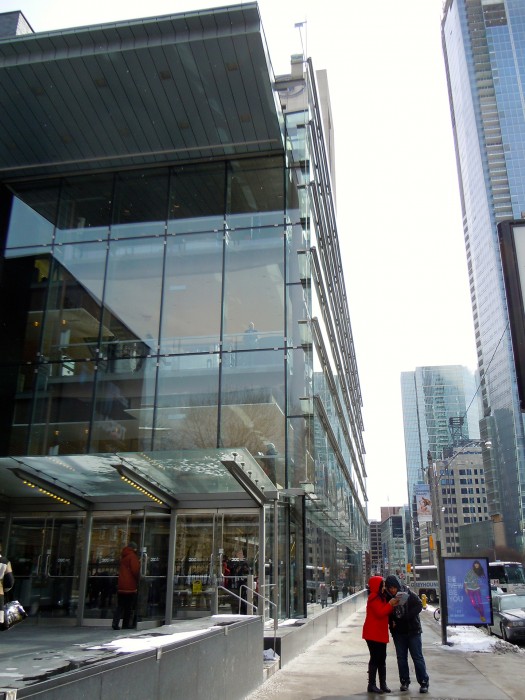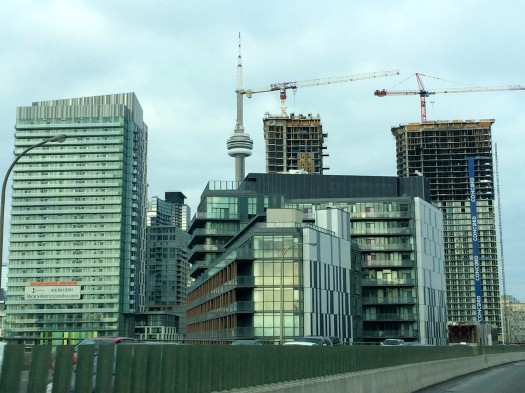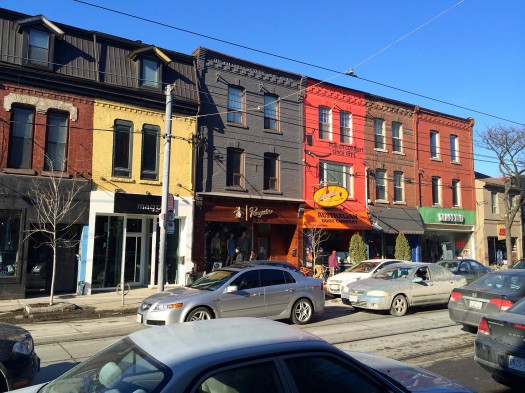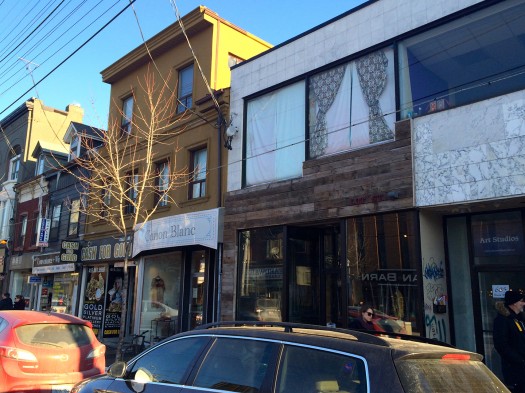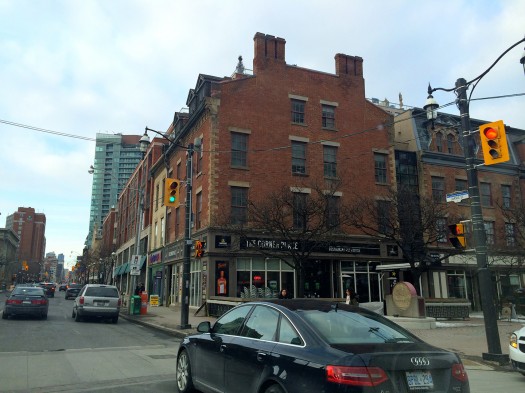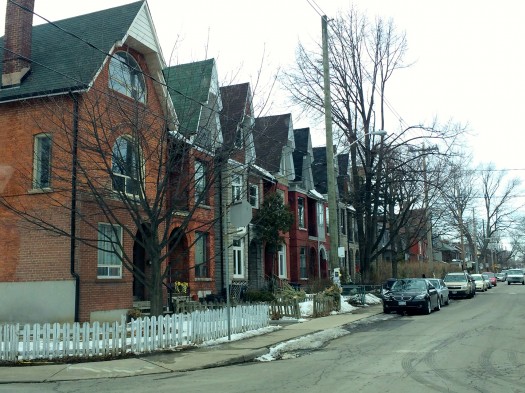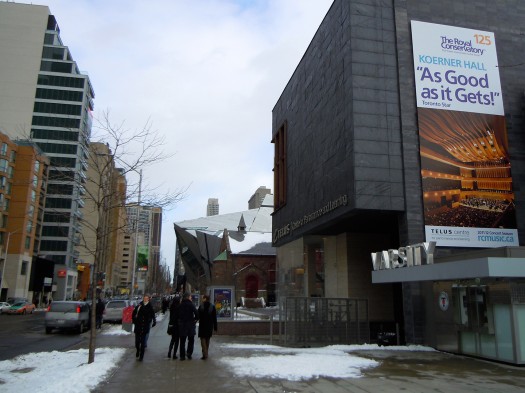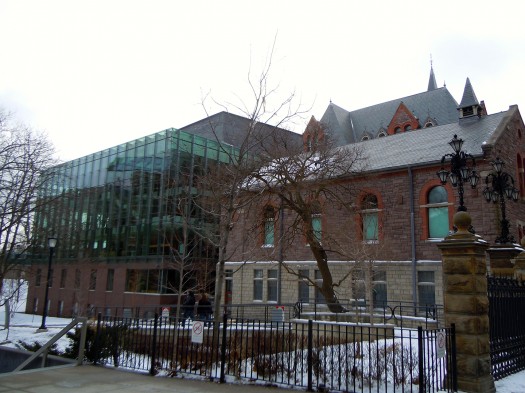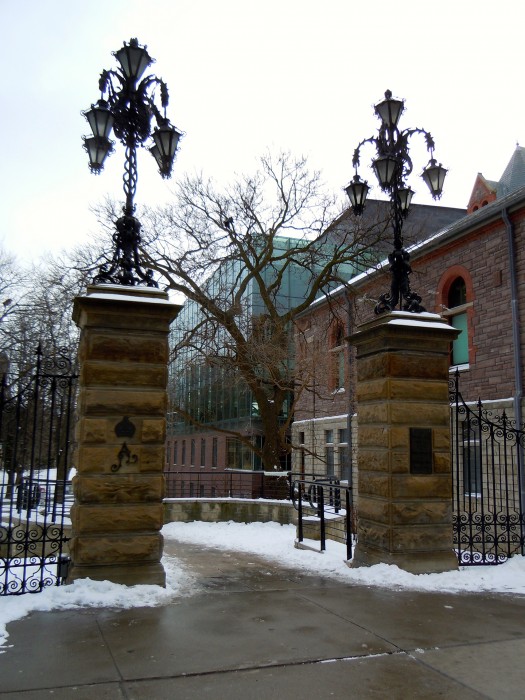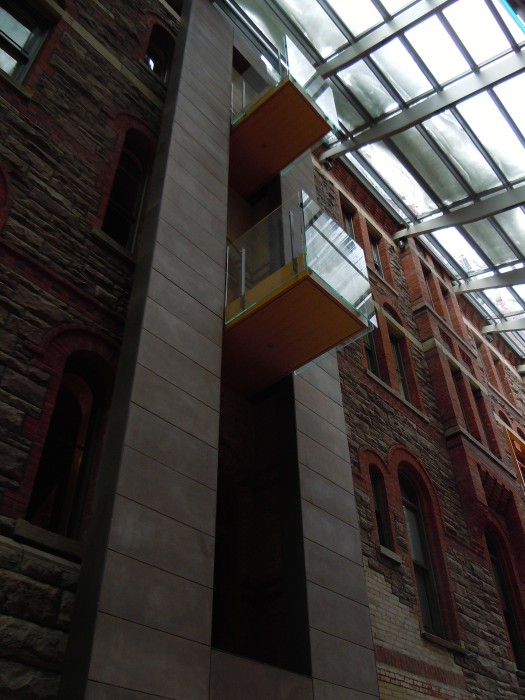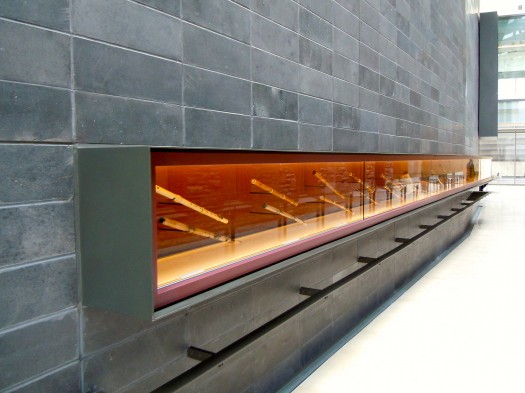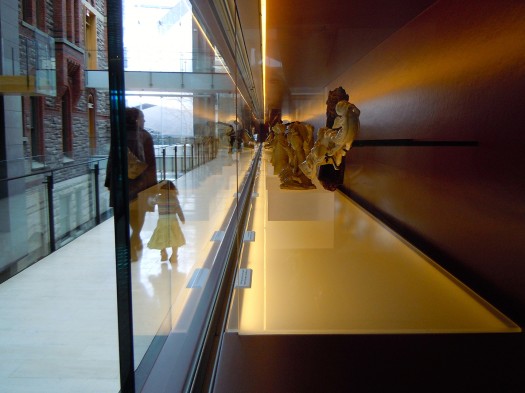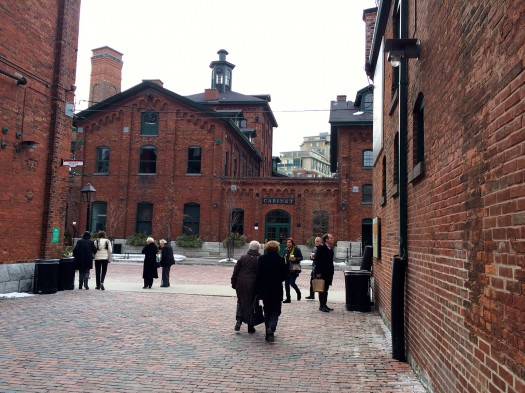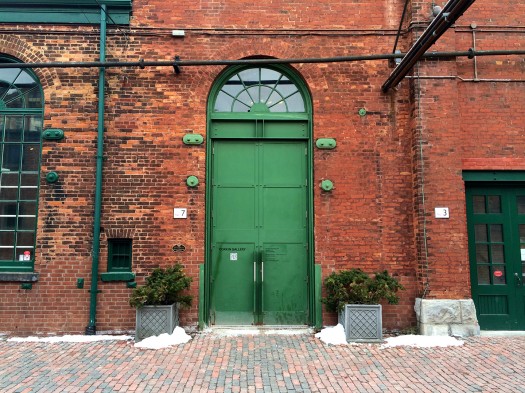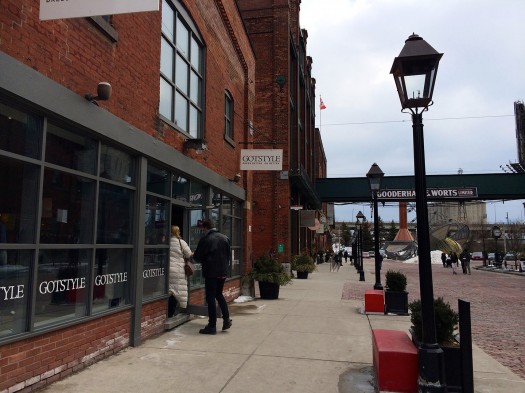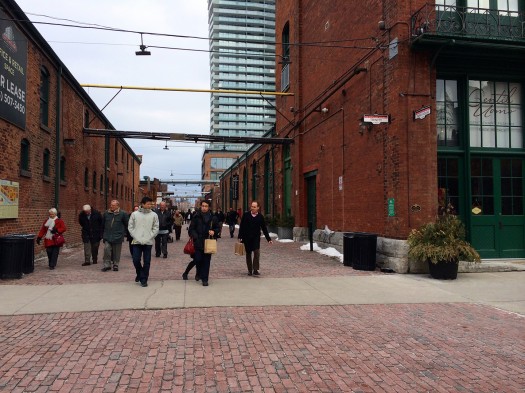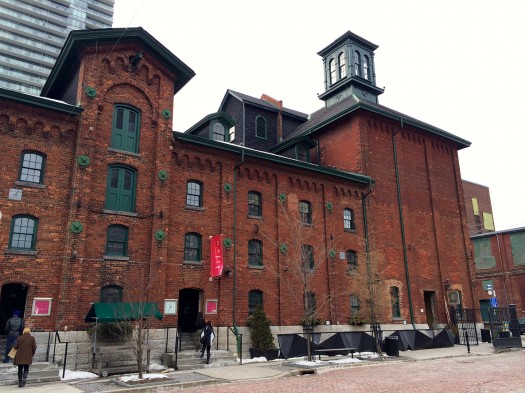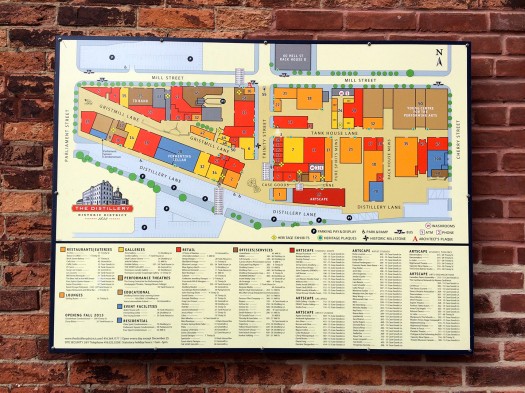A Placemaking Journal
Toronto’s Gardiner Expressway: Green light for removal this week?
Last week, passing my Canadian citizenship exam was a poignant moment for me. I am grateful to have dual citizenship in Canada and the US, with the right to live and work in both great countries. I realize that we often spend time on this blog talking about what stands in the way of great placemaking, but I enjoyed over the weekend looking back at our Canadian urbanism series and celebrating what all’s going right in the nation to nurture neighbourhood-scale livability: Montreal: Lessons from great Canadian urbanism | Québec City: La ville de l’amour | Ottawa: Lessons from great Canadian urbanism | Mont-Tremblant: Cottage living in the Canadian Shield | Victoria Beach Lean Urbanism: A century practice? | Lessons from the Woods.
Toronto has been upping their game with some inspiring dialogues on the subject of livability, much of which can be found on spacing.ca and urbantoronto.ca. Or in the Twittersphere, from Harold Madi, Shawn Micallef, Ken Greenberg, Gil Penalosa, Jennifer Keesmaat, LiveWorkLearnPlay, Robert Freedman, Alex Bozikovic, and ULI Toronto, to name a few.
The hottest urbanism topic in Toronto this week is whether to remove the Gardiner Expressway East, and free a significant portion of downtown from automobile domination to capture significant long-term economic, social and environmental value. Urbanists are unanimous in their opinion to remove, including the Council for Canadian Urbanism, Richard Florida, the economic case by Leo DelZotto, Mitchell Cohen, and Alfredo Romano, Sean Marshall‘s Gardiner history lesson, and Edward Keenan‘s video summary. City Council decides on June 10 whether to go join the highways to boulevards movement and make a major Canadian urbanism success story. You can sign the petition to Toronto City Council on change.org, although CBC says the vote is deadlocked, despite the fact that “Every living city planner has publicly endorsed this option as being more pedestrian friendly and allowing for better development of the waterfront.”
Densification pressure has also sparked all sorts of conversations, including Lloyd Alter’s invitation to call him a density creep, if you must. Some of these battle lines are best drawn in pictures, and are often fought because of not having clear agreement about the appropriate range of character for each block within a neighbourhood, both in terms of the buildings and of the street.
To help establish legal parameters, the rural-to-urban spectrum of the transect is often the chosen tool. Both streets and buildings need to change their character as they move from the rural to the urban. While highways are acceptable in rural areas, they need to morph into urban boulevards as they move into the city. Let’s take a quick photo walk through Toronto’s transect, with the understanding that the names and character of the T-Zones range drastically from place to place.
Toronto’s Transect
T6 Urban Core is the highest density and height found in the metro area, with the greatest variety of uses and civic buildings of regional importance. It has larger blocks with buildings are set close to wide sidewalks. However, as the second image below shows, too much of the most valuable part of downtown — it’s waterfront — is currently dominated by a low-value highway. Ottawa’s Canal Urbanism provides reasons aplenty for why the highway should morph into a boulevard when it comes into the city. Keeping waterways as a public amenity in the city center doesn’t just capture value, but it also drives value by providing the best local backdrop to a stellar parks and trails system that hosts active transportation and entertainment year round, thereby becoming an anchor for local businesses and residents. A high-volume multi-way boulevard doesn’t degrade the highest value urbanism, unlike the outdated infrastructure choice of a highway most certainly would. Steve Mouzon‘s illustration of how the whole city of Florence can fit in one Atlanta cloverleaf starts to help make the value capture case.
T5 Urban Center has medium density mixed-use buildings of retail, offices, townhouses, apartments and cultural pursuits. Finely-gridded streets sport street trees and buildings close to wide sidewalks. Toronto has kilometers of exceptionally satisfying T5, in a range of intensities:
T4 General Urban has a mix of uses, but is primarily residential with houses, townhouses, duplexes, apartment buildings, and live-work units. Variable setbacks, medium-sized blocks. T4O General Urban Open allows higher densities than T4, and restricted retail, offices, rowhouses and apartments. It’s generally the Missing Middle of housing and the character zone that is underdeveloped over the past 70 years, but increasingly what the Boomer and Millennial markets are demanding. T4 is important as a buffer zone between T3 and T5, but seen here next to T6 is a fight brewing:
I don’t have great photos of Toronto’s T3, T2, and T1, but here’s a brief description. T3 Sub-Urban is low density residential, mostly single-family detached. Some mixed use, home occupations, outbuildings, above-garage apartments or granny flats out back. Naturalistic plantings, deep setbacks. Blocks may be large and irregular in the neighbourhood. T2 Rural is sparsely settled open or cultivated lands: woodland, agricultural land, and grassland. T2 includes lands that are not slated for development, but that have not been permanently protected, either. T1 Natural Lands is approximating or reverting to a wilderness condition, including lands unsuitable for settlement due to topography, hydrology or vegetation and lands that have been permanently protected from development.
All of the images above deal primarily with the walkable urban transect. More on the suburban or sprawl transect here.
The point to the transect is that there’s a place for everything, and everything in its place. Different people, ecologies, and economies flourish in different character zones.
By its nature, the metropolis provides what otherwise could be given only by traveling; namely, the strange. ~Jane Jacobs
Redevelopment: No façade-ectomy here!
Often I’ve complained when cities preserve the skin of the building, instead of integrating new with old in a respectful manner. This sort of façade-ectomy rarely preserves history and makes the new structure much less likely to make it another century.
Nowadays, the process of growth and development almost never seems to manage to create this subtle balance between the importance of the individual parts, and the coherence of the environment as a whole. One or the other always dominates. ~Christopher Alexander
The Royal Conservatory’s Koerner Hall is one of many Toronto examples that does a particularly good job of respectfully expanding historic structures while contributing to the walkability of the neighbourhood:
Adaptive Reuse: Reduce, reuse, recycle
The embodied energy of buildings has a better chance of being preserved if the structures are lovable and flexible enough to be redeveloped over time. The Distillery is a satisfying adaptive reuse, fulfilling market needs for dwellings, artist studios, galleries, theatres, retail, office, and hospitality services.
In celebrating one more Canadian city, it’s been instructive for me to pause and reflect on my responsibilities of expanded citizenship, as stated by the immigration services of the two countries, along with our prime virtues and government structure.
In Canada, responsible citizens: Obey the law; Take responsibility for oneself and one’s family; Help others in the community; Serve on a jury; Vote in elections; Respect the rights and freedoms of others; and Protect Canadian heritage and environment. Prime virtues: peace, order and good government, per the Constitution Act, July 1, 1867. Government: parliamentary democracy and constitutional monarchy.
In the US, responsible citizens: Support and defend the Constitution; Respect and obey laws; Stay informed of the issues affecting our community; Participate in the democratic process; Respect the rights, beliefs, and opinions of others; Participate in local community; Pay taxes; Serve on a jury; and Defend the country. Prime virtues: Life, liberty and the pursuit of happiness, per the Declaration of Independence, July 4, 1776. Government: presidential (constitutional representative) democracy and federal republic.
These responsibilities, values and governmental forms of both countries play a pivotal role in the sort of community-based placemaking that we advocate in communities across the US and Canada.
–Hazel Borys
If PlaceShakers is our soapbox, our Facebook page is where we step down, grab a drink and enjoy a little conversation. Looking for a heads-up on the latest community-building news and perspective from around the web? Click through and “Like” us and we’ll keep you in the loop.









